Thinner, crispier
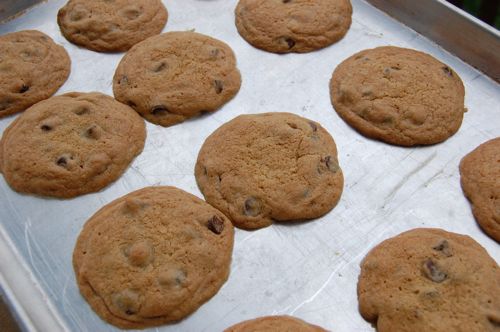
Here’s a variety that a lot of die-hard chocolate chip cookie lovers can’t live without: a thinnish, deeply caramelized cookie that goes crunch when you bite it. Delicious as it is, it certainly deviates from the Platonic ideal of the chocolate chip cookie as pictured on the Nestlé web site. The question is: what series of happy accidents brings it about? We’ll see.
All of us (or nearly all of us) know how to make chocolate chip cookies, so these photos will be old hat to most. However for purposes of discussion this week, I think they will be useful.
Creating a thin cookie means, first and foremost, defeating the chocolate chip cookie’s own effort to rise. Does that mean leaving out the leavening? Nope, because the baking soda is critical to the cookie’s texture. However it does mean we’ll do everything we can to under-achieve when it comes to this cookie’s backup rising strategy: the creaming method (for more on that see the menu to the right). That means no electric mixer. We’ll do these babies by hand.
Begin by combining the flour, salt and soda in a bowl and giving it a good stir.
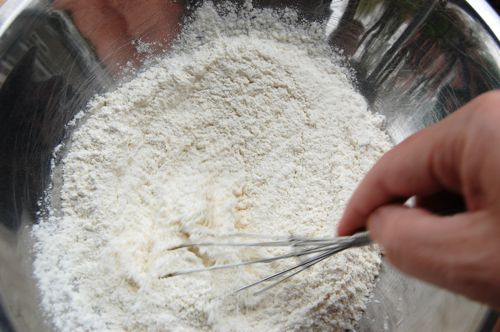
Next, procure your butter. You want it soft, soft. Like drop-it-and-it-makes-a-puddle soft. Like great-grandma-making-cookies-in-her-unairconditioned-kitchen-in-August soft. Soft. For best results, employ a more expensive Euro-style butter, as these butters tend to have lower melt points and help the batter to spread.
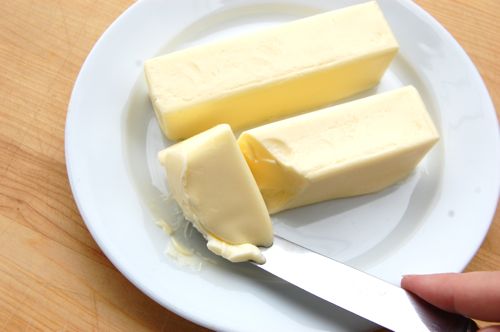
Combine that with your sugars…
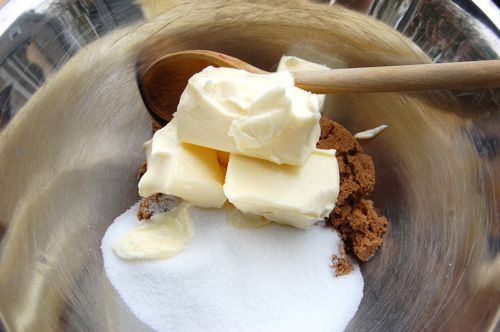
…and gently stir — don’t beat it — until it’s all combined. Add your vanilla…
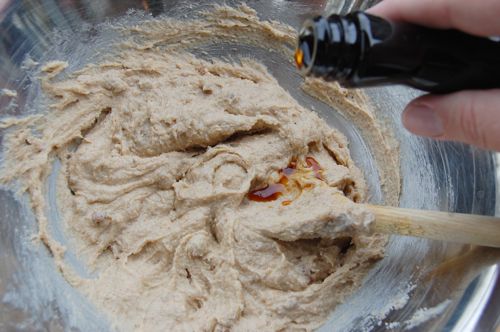
…and your eggs one at a time, stirring them in thoroughly.
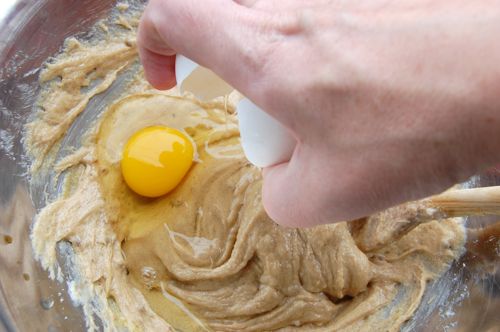
Add the flour mixture slowly…
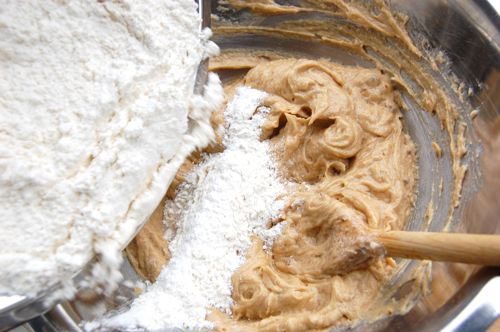
…and again stir gently to combine.
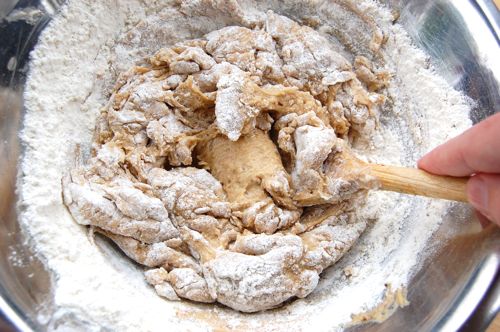
Pour in the chips…
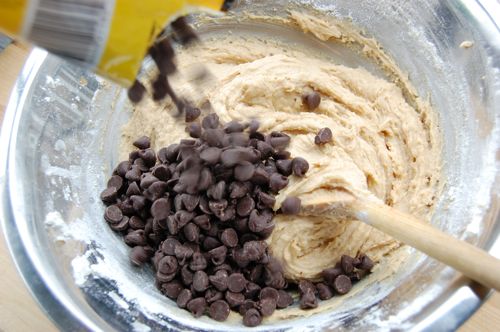
…and stir them in.
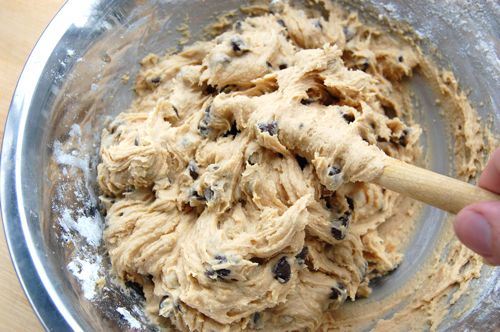
Spoon tablespoon-sized dollops onto an ungreased sheet pan and bake.
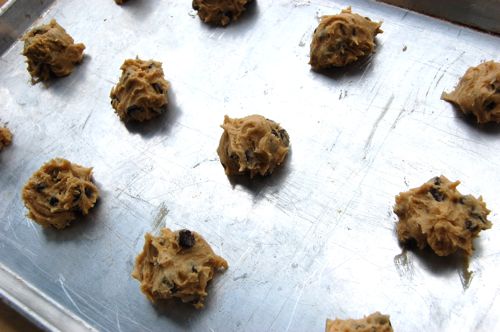
But first…we’ve already robbed these cookies of the fat-and-sugar pseudo-foam they were depending on to complete their rise. But is there anything else we can do in the interests of thinness? For that we need to consider exactly what it is that causes a mass of cookie to dough to initially set in the oven. Any guesses? Yes you in the front with the milk moustache. Right: egg white coagulation. The proteins in egg whites begin to coagulate and firm at about 140 degrees. That causes the semi-solid batter to stop spreading in the heat and start rising.
How to discourage this? Well, we’ll simply pretend that grandma’s oven is running a little cool, and turn the heat down to 350 instead of 375. That’ll help delay the heating of the dough and give the already close-to-melted butter a chance to run. Of course we’ll need to bake them a little longer to make up for it, say 12-16 minutes, depending on how dark you like them. Cool on wire racks and fetch the milk.
Oh dear, loving your website already.
Thanks for all the cool tips.
God bless!
It’s my pleasure, Jacob! Come back often!
– Joe